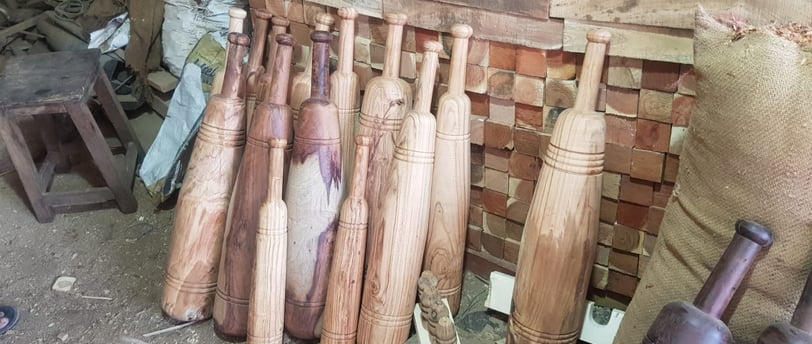Which Wood is Best for Mudgar?
Are you a fitness enthusiast intrigued by the ancient art of mudgar training? Perhaps you're on the hunt for the perfect mudgar but find yourself overwhelmed by the plethora of wood options available. Fear not! In this guide, we'll unravel the secrets behind choosing the best wood for your mudgar, ensuring durability, performance, and longevity.
3/20/20243 min read


Which Wood is Best for Mudgar? A Comprehensive Guide for Fitness Enthusiasts
Navigating the Maze of Mudgar Wood Selection
In the realm of ancient Indian warrior fitness, mudgar training stands out as a timeless practice for building strength, agility, and endurance. However, choosing the right wood for your mudgar is crucial to ensure longevity and performance. In this comprehensive guide, we'll delve into the intricacies of mudgar wood selection, helping you make an informed decision that aligns with your budget and fitness goals.
Understanding the Dynamics of Mudgar Wood: Why Quality Matters
Before diving into specific types of wood, it's essential to grasp why the quality of mudgar wood is paramount. Mudgars are subjected to varying temperatures and humidity levels, especially in regions like India, where climate fluctuations are commonplace. Subpar wood can succumb to these environmental factors, leading to cracks, warping, and ultimately, a shortened lifespan of your mudgar.
Why Does a Mudgar Crack or Break? Exploring the Culprits
Mudgars, like any wooden object, are susceptible to expansion and contraction due to temperature changes. In regions with extreme climates, such as India, this phenomenon is particularly pronounced. During hot summers, the wood expands rapidly, while in rainy seasons, high moisture levels can lead to absorption and subsequent drying. These fluctuations strain the wood, making it prone to cracks and structural damage over time.
Types of Wood: From Mango to Teak - A Spectrum of Options
1. Mango or Neem or Poplar : These woods, while budget-friendly, lack the durability required for prolonged mudgar use. Expect cracks within a couple of months, accompanied by a loss of weight due to wood degradation.
2. Babool (Acacia) : Known for its density, Babool offers slightly better longevity compared to Mango or Neem. However, it still falls short in resisting temperature fluctuations, with cracks likely to appear within a year.
3. Mahogany : Emerging as a popular choice among mudgar enthusiasts, Mahogany boasts superior quality and durability. While relatively expensive, its resilience to environmental factors makes it a worthy investment for long-term use.
4. Sheesham (Rosewood) : Renowned for its beauty and resilience, Sheesham is a top contender for mudgar construction. Its ability to withstand temperature variations and resist cracking makes it a preferred choice for serious practitioners.
5. Sagwan (Teakwood) : Regarded as the pinnacle of mudgar wood, Teakwood offers unmatched durability and resistance to water and insects. While pricey, its longevity and aesthetic appeal justify the investment for enthusiasts seeking the best.
Factors to Consider Beyond Wood Quality: Polishing, Weight, and Jointing
While wood quality is paramount, other factors play a role in the performance and longevity of your mudgar. Polishing, for instance, can enhance aesthetics but may compromise grip and sweat absorption. Opting for non-polished surfaces or using gloves can mitigate these issues.
When selecting the weight of your mudgar, start with a manageable option, say 2-3 kgs, gradually increasing as you build strength and proficiency. Avoid joints in your mudgar construction, as they pose a risk of breakage during workouts, compromising safety and durability.
Choosing the Right Mudgar for Your Fitness Journey: Beginner, Intermediate, and Professional Recommendations
For beginners exploring mudgar training on a budget, Babool offers a cost-effective option that balances affordability with durability. Intermediate practitioners seeking an upgrade may opt for Rosewood, combining longevity with moderate pricing. Professionals with no budget constraints can invest in Teakwood for unparalleled durability and aesthetic appeal.
Conclusion: Navigating Your Mudgar Journey with Confidence
In the quest for optimal fitness, the choice of mudgar wood plays a crucial role in shaping your experience and outcomes. By understanding the nuances of wood selection, considering factors beyond quality, and aligning your choice with your fitness journey's stage, you can embark on your mudgar training with confidence and assurance of lasting performance. Remember, investing in quality wood today ensures a sturdy foundation for your fitness pursuits tomorrow.
